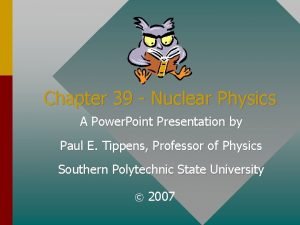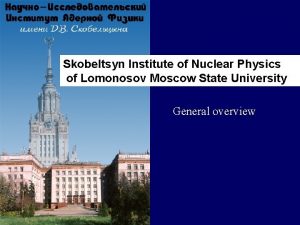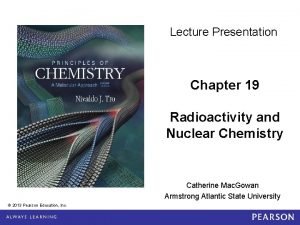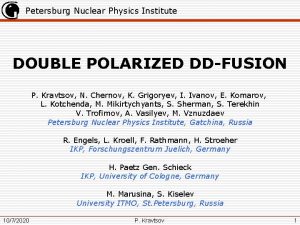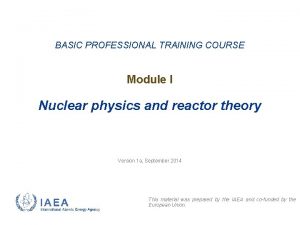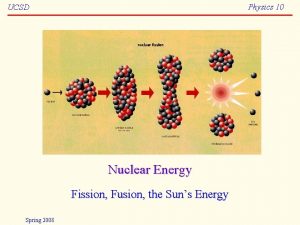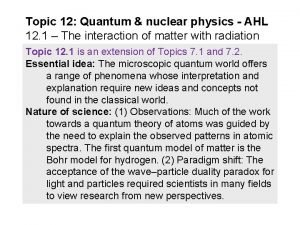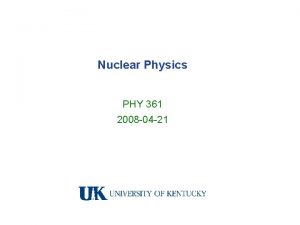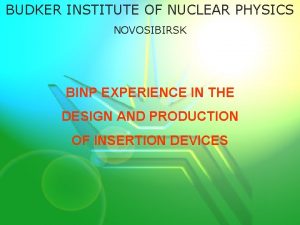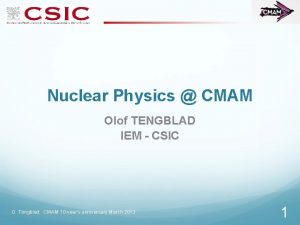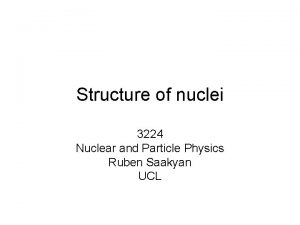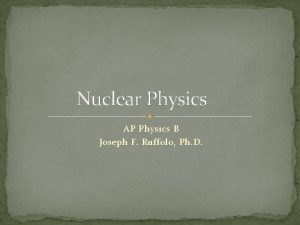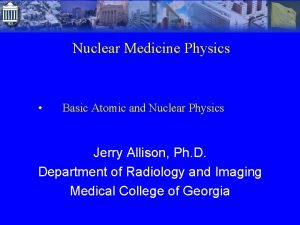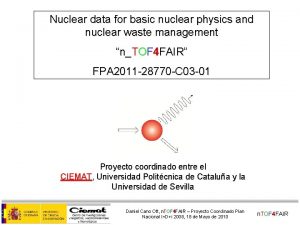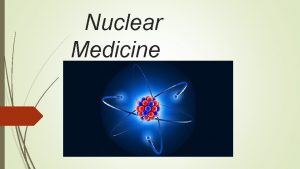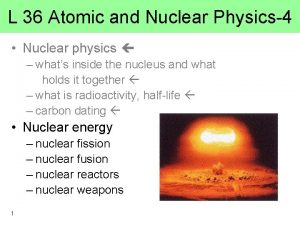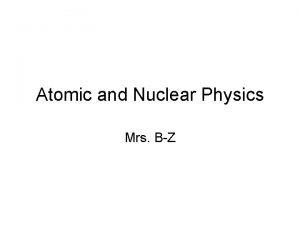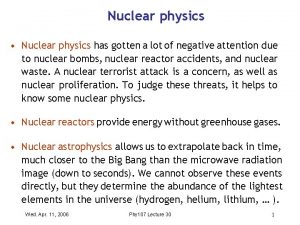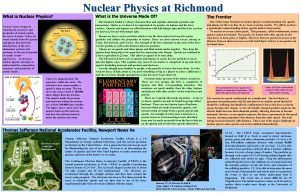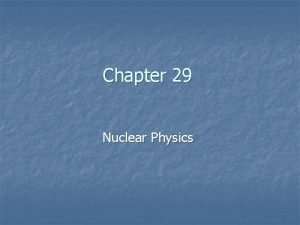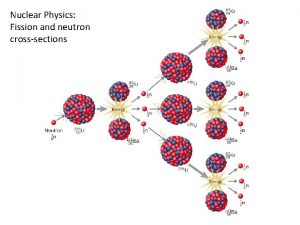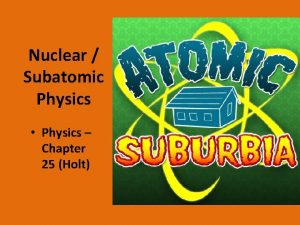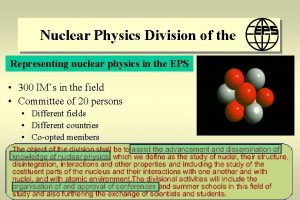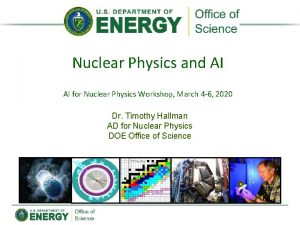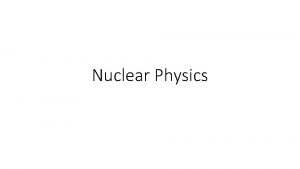Atomic Nuclear Physics Atomic Physics What are we


















- Slides: 18

Atomic & Nuclear Physics Atomic Physics What are we made of?

What’s inside…. . ?

A long, long time ago … ANCIENT GREEKS “Atomos” – uncuttable / indivisible Basic building block

A long time ago … ROMANS “On the Nature of Things” Lucretius - 1 st Century BC Honey and milk, when they are rolled in the mouth, cause an agreeable sensation to the tongue. But bitter wormwood and astringent centaury screw the mouth awry with their nauseating savour. You may readily infer that such substances as agreeably titillate the senses are composed of smooth round atoms. Those that seem bitter and harsh are more tightly compacted of hooked particles and accordingly tear their way to our senses and rend our bodies by their inroads. Things that seem to us hard and stiff must be composed of deeply indented and hooked atoms and held firm by their intertangling branches. In the front rank of this class stand diamonds Liquids, on the other hand, must owe their fluid consistency to atoms that are smooth and round. For poppy seed can be poured as easily as if it were water; the globules do not hold one another back, and when they are jolted they tend to roll downhill as water does. A third class is constituted by things such as smoke, cloud and flames. If their atoms are not all smooth and round, yet they cannot be jagged and intertangled. They must be such as to prick the body and even to penetrate rocks but not to stick together; so you can readily grasp that substances hurtful to the senses but not solid are sharp-pointed but without projections.

Moving forward to 1803

Practical Challenge Using the kit provided take measurements to estimate the diameter of an atom Oil drop - estimating atomic diameter

1904 Thomson’s Plum Pudding Model 1. Spheres of positive charge. 2. With negative charges spread through it. This resembled a plum-pudding, so it was called the ‘Plum –pudding’ model.

But new evidence from Rutherford’s experiment led to a new model! https: //phet. colorado. edu/en/simulation/rutherford-scattering

The nuclear atom



Label the helium atom and fill in the table: N_____ eutron { E_____ lectron N_____ ucleus P_____ roton Particle Proton Neutron Electron Mass Charge 1 +1 1 none 1/1840 th -1

Atomic Number and Mass Number Protons & Neutrons Atomic Number Protons U

Isotopes are atoms of the same element (same protons & electrons) with different numbers of neutrons. This makes them unstable. Hydrogen 1 H 1 Deuterium 2 H 1 Tritium 3 H 1

Atomic structure with sweets Choose appropriate amounts of sweets to make a model of the following atoms Remember - in a neutral atom number of protons = number of electrons Electrons are arranged in shells – the first has 2, then 8, 8 …


ITCH

• Atom clip
 Mikael ferm
Mikael ferm Fisión nuclear vs fision nuclear
Fisión nuclear vs fision nuclear Lesson 15 nuclear quest nuclear reactions
Lesson 15 nuclear quest nuclear reactions Nuclear physics topics for presentation
Nuclear physics topics for presentation Skobeltsyn institute of nuclear physics
Skobeltsyn institute of nuclear physics Nuclear magic numbers
Nuclear magic numbers Petersburg nuclear physics institute
Petersburg nuclear physics institute Nuclear physics
Nuclear physics Nuclear energy in physics
Nuclear energy in physics Nuclear physics
Nuclear physics Quantum nuclear physics
Quantum nuclear physics Quantum and nuclear physics
Quantum and nuclear physics Nuclear physics
Nuclear physics Nuclear physics
Nuclear physics Scattering cross section in nuclear physics
Scattering cross section in nuclear physics Budker
Budker Nuclear physics
Nuclear physics Shell model of nucleus
Shell model of nucleus Nuclear physics b
Nuclear physics b



